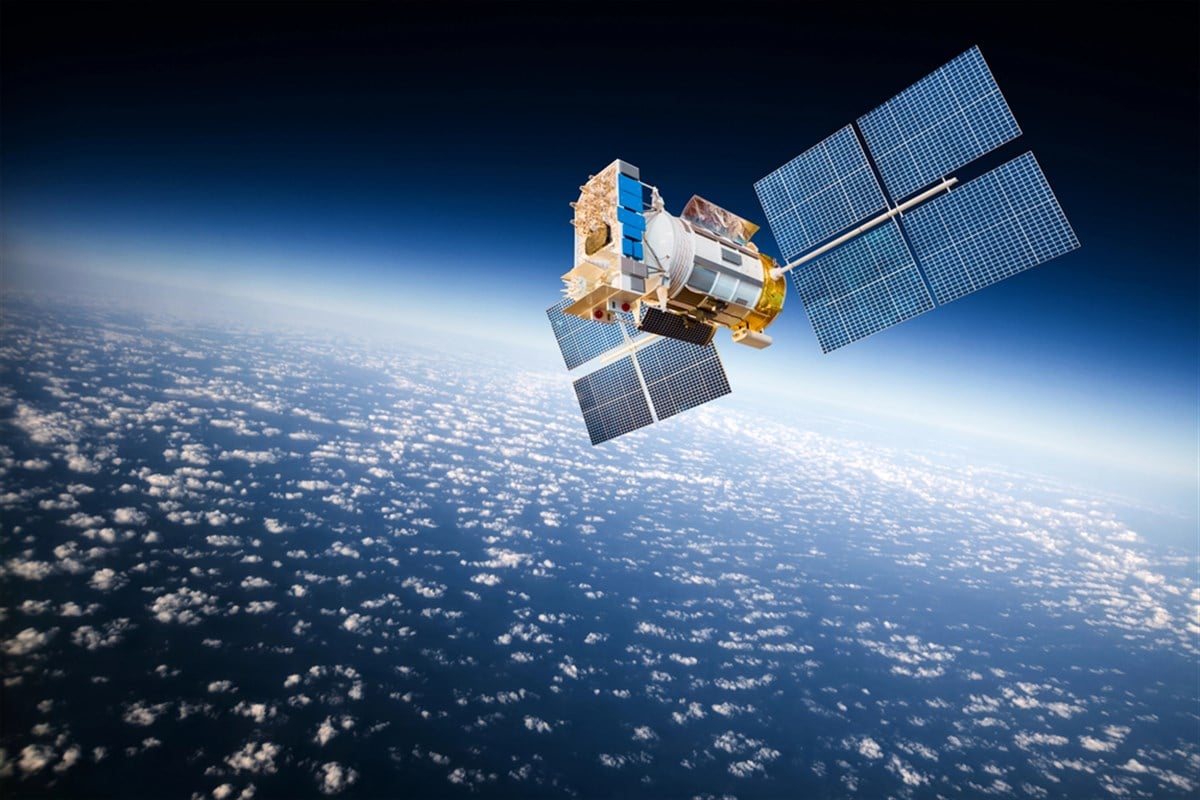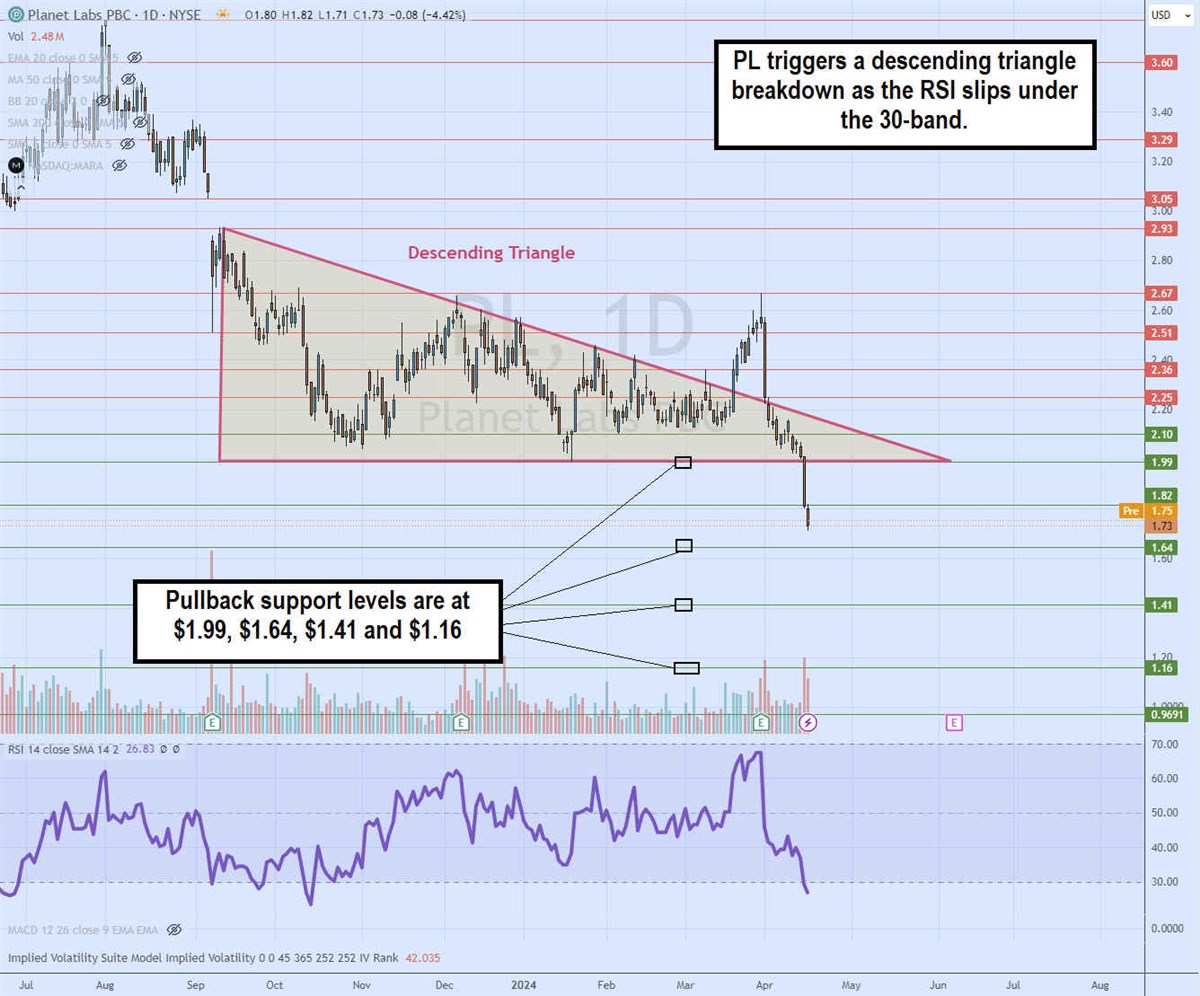
Artificial intelligence (AI) is propping up the computer and technology sector, but it's also helping many other industries involved in collecting, procuring and providing real-time data. Planet Labs PBC (NYSE: PL), which was started by NASA scientists in 2010, operates a network of over 200 satellites that provides planetary data around the clock for many industries. It's a leader in the earth observation (EO) segment and deems itself the "Bloomberg Terminal" for earth data.
The data is used for weather, agriculture, energy, sustainability, insurance, finance, technology, and defense industries. AI requires oceans of data to train models, and this insatiable demand for data has been driving revenues higher for Planet Labs.
Earth Observation as an Industry
The EO segment is a growing industry, and Planet Labs is emerging as its leader. It has the largest EO satellite network and the largest EO data archive. Tesla Inc. (NASDAQ: TSLA) CEO-owned Starlink has a larger network, but that's tailored for communications purposes rather than EO. Applications for EO continue to grow, including GPS, mapping for autonomous vehicles, emergency disaster response, defense analysis, shipping route optimization, fisheries management, agriculture data, and environmental monitoring and conservation.
Revolutionary CubeSats
Planet Labs has launched over 550 miniaturized satellites called CubeSats. CubeSats are designed in multiples of units. A unit is 10 centimeters or 3.9 inches on each side. They are built for specific purposes in multiples of unit sizes ranging from one unit to six units or more. They carry a multitude of communication equipment, sensors and electronics specific to its mission. CubeSats are low-cost and provide an economical and streamlined way to make space more accessible.
Daily Descending Triangle
The daily PL candlestick chart illustrates a descending triangle pattern. The descending (falling) trendline formed on the failed gap-fill attempt at $2.93 on September 12, 2023. Shares fell to a flat-bottom low of $2.01, forming the flat lower trendline. PL initially attempted a breakout through the descending trendline to peak at $2.67 on March 28, 2024, but fell back into the triangle as it slipped under the descending trendline at $2.25 to retest the flat-bottom trendline at $1.99. The daily relative strength index (RSI) fell back under the 40-band. Pullback supports are at $1.99, $1.64, $1.41 and $1.16

Orbiting in the Red
Planet Labs reported fiscal Q4 2024 losses of 11 cents per share, missing consensus estimates by 5 cents. Revenues grew 11.1% YOY to $58.85 million, slightly beating the $58.19 million consensus estimate. The customer count rose 15% YOY to 1,018 customers. The government sector had strong demand.
Fiscal full-year 2024 revenue rose 15% year over year to $220.7 million. The percent of recurring annual contract value (ACV) was 93% for Q4. Planet Labs's Q4 gross margin was 55%, and its full-year gross margin was 51%, compared to 49% the prior year. Planet Labs ended the year with $298.9 million in cash.
Milestone Contracts in Q4 2024
The quarter hosted many milestone deals and contracts. Planet Lab was awarded a seven-figure contract from the Naval Information Warfare Center (NIWC) Pacific for monitoring and vessel detection services over the Pacific Ocean. NIWC Pacific will integrate Planet Labs' data and AI capabilities into its SeaVision platform to bolster maritime domain awareness.
Carbon Mapper signed an eight-figure multi-year contract with Planet Labs to provide hyperspectral core imagery until 2030. The contract is an extension that covers 2026 to 2030 of its current contract.
Planet Labs and Google partnered to provide PlanetScope satellite data on Google Cloud Marketplace. This enables Google Cloud customers to use Planet data to analyze and derive insights at scale.
In-Line Guidance
Planet Labs issued in-line guidance for fiscal Q1 2025 with revenues between $58 million and $61 million, representing 13% YOY growth. Non-GAAP growth margins are expected between 50% and 52%. Adjusted EBITDA loss will range from $11 million to $9 million in the quarter as capex is expected between $14 million and $17 million.
CEO Insights
Planet Labs CEO Will Marshall said, "Planet delivered a solid fourth quarter to cap off the year. We saw strong demand in the government sector and an evolution toward selling solutions alongside our data, enabled by the revolution happening in AI. We are prioritizing investment behind these trends to capture the opportunity."
Marshall concluded, "Additionally, our next-generation satellite systems are taking flight. The Pelican tech demo satellite is performing well in orbit, and the first Tanager satellite is planned to launch later this year."
Planet Labs analyst ratings and price targets are at MarketBeat.













